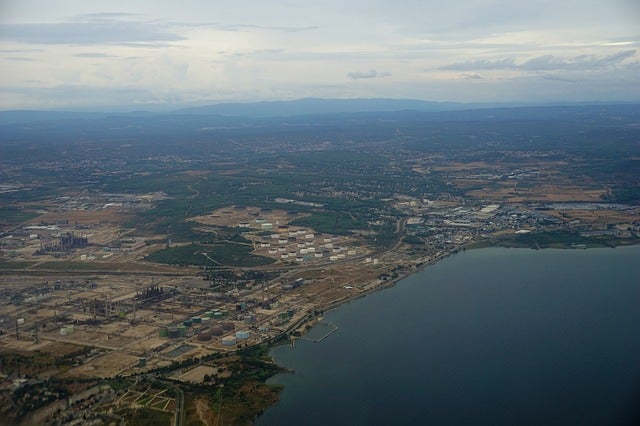
Commonwealth LNG has been issued a final environmental impact statement (EIS) from the staff of the US Federal Energy Regulatory Commission (FERC) for its proposed Commonwealth LNG project in Louisiana.
The FERC will now consider its staff’s recommendations when taking a decision on the liquefied natural gas (LNG) project in Cameron Parish.
Commonwealth LNG is seeking the Commission’s consent to site, build, and operate a natural gas liquefaction and export terminal as well as an integrated natural gas pipeline in the region.
The Commonwealth LNG project will primarily feature six gas pre-treatment trains with a total capacity of 8.4 million metric tons per annum (8mtpa). It will be located near Cameron, on the west bank of the Calcasieu Ship Channel, at the mouth of the Gulf of Mexico.
According to the FERC, the US Army Corps of Engineers, US Department of Energy, US Coast Guard, US Environmental Protection Agency, and other agencies co-operated with its staff in preparing the final EIS.
FERC said that although the cooperating agencies gave feedback to the conclusions and recommendations filed in the final EIS, they will provide their own conclusions and recommendations in their respective ‘Records of Decision’ for the LNG project.
The Commission’s staff ruled that approval of the proposed Commonwealth LNG project after implementing the recommended mitigation measures in the EIS will lead to certain adverse environmental impacts.
Most of the impacts on the environment will be brought down to less than significant levels, found the FERC staff.
The FERC stated: “However, FERC staff conclude there would be significant impacts on visual resources and impacts on environmental justice communities would be disproportionately high and adverse.
“This EIS is not characterising the proposed project’s greenhouse gas emissions as significant or insignificant because the Commission is conducting a generic proceeding to determine whether and how the Commission will conduct significance determinations going forward.”
The project’s associated facilities are two flare systems, six LNG storage tanks with a capacity of 50,000m3, a marine facility, a barge dock, and a vessel maneuvering area.
Besides, the LNG project will have a 4.8km long 42inch pipeline and its related facilities which will be two interconnection facilities to be located at existing natural gas pipelines as well as a metering station.
The pipeline is designed to deliver nearly 1.44 billion cubic feet per day of natural gas to the Commonwealth LNG project.
Commonwealth LNG expects to receive full FERC approval by the year end and is targeting to make an official final investment decision (FID) during the third quarter of 2023. The company is aiming to begin commercial operations of the Commonwealth LNG project in Q3 2026.
Last week, the company signed agreements with Woodside Energy for the supply of up to 2.5mtpa of LNG for a period of 20 years from the proposed project.


